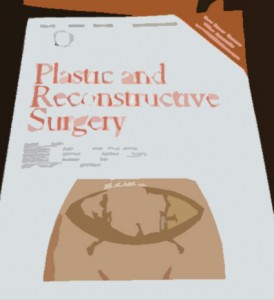So those who follow my blog know I love fat. Fat transfer and fat grafting is part of our future, and I really love the magical changes I see after transfer, which I think are due to those stem cells.
 This blog is likely too in the scientific trenches for most, but I love to see the papers presented. These thoughts, pursued and elaborated on, become our future. I like to see what they are doing. They have a lot of stem cell research where they are stimulating the stem cells to change into bone or nerve cells. They are analyzing the stem cells – are there functionally distinct subpopulations of stem cells? How do we identify them?
This blog is likely too in the scientific trenches for most, but I love to see the papers presented. These thoughts, pursued and elaborated on, become our future. I like to see what they are doing. They have a lot of stem cell research where they are stimulating the stem cells to change into bone or nerve cells. They are analyzing the stem cells – are there functionally distinct subpopulations of stem cells? How do we identify them?
This was part of the May 2013 Plastic & Reconstructive Surgery Journal. I will paraphrase into English non-doctor speak where I can.
Question:
Human fat derived stem cells are appealing due to ease of harvest (simple liposuction) and multipotency (they can turn into different kinds of things). For targeted clinical applications, is there a way to identify and isolate subpopulations of stem cells?
Answer:
YES. Functionally distinct subpopulations can be identified and linked to surface marker expression. This may lead to more targeted cell based therapies.
Question:
Can we get predictable and durable fat grafting by protecting the microvasculature of the site? (ie little tiny blood vessels which bring blood flow to the newly transferred fat)
Answer:
YES. FDA approved PDE5i sideafil citrate was infiltrated prior to harvest and then fat survival evaluated after. They found fat graft vascularization is critically dependent on maintenance of donor fat vasculature during the ischemic period (the few days right after transfer). “Sildenafil protects the donor blood vessels during transfer and revascularization markedly increasing long term graft volume retention. These date demonstrate a rapidly translatable FDA approved method to increase predictability and durability of autologous fat grafting in clinical practice. ” ***NOTE: this fat grafting abstract does not state the method of fat graft, and I suspect it is a pedicled flap.
Question:
Can transferring stem cells help you expand soft tissue expansion? (We use tissue expansion for breast cancer reconstruction and to help close difficult large wounds)
Answer:
Yes. “The study results indicate significantly beneficial effects of autologous stem cells therapy in patients with deteriorating expanded skin through accelerating skin regeneration.”
Question:
Are bone marrow and fat mesenchymal stem cells equal in their ability to help promote transplant tolerance?
Answer:
Yes. “The mesenchymal stem cells from different tissue origins exert immunomodulation with stimulation…indicating immunregulatory effects of this type of stem cells are non specific.” Why would this matter? Would you want to have to get your stem cells harvested from your bone marrow (ouch?) or liposuction? And if you need a kidney transplant, wouldn’t it be nice to promote tolerance of your new transplanted organ with something simple like stem cells?
